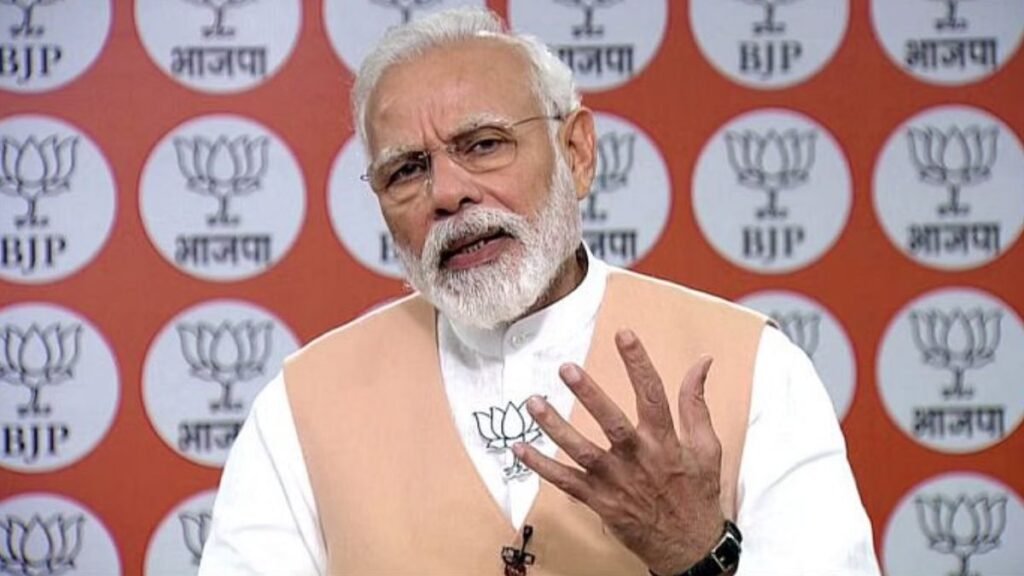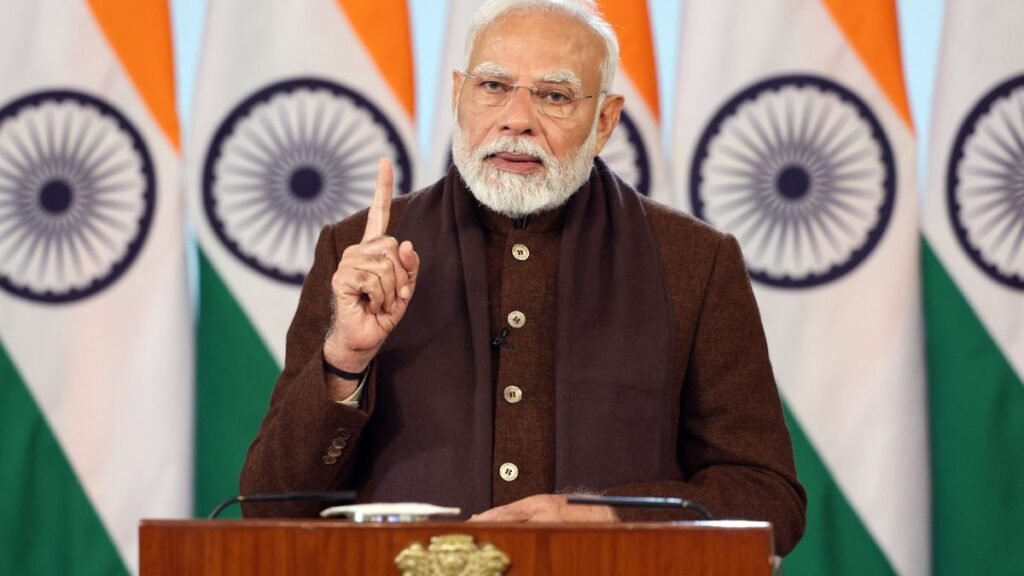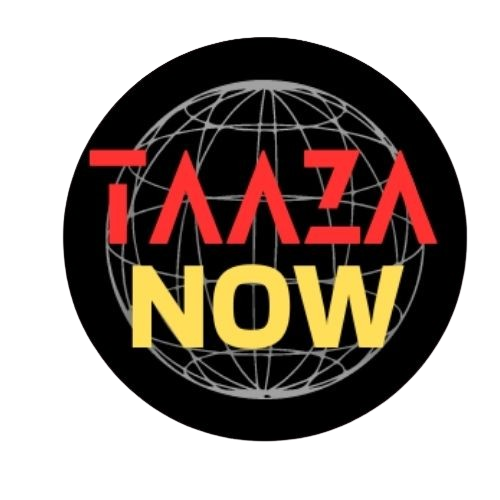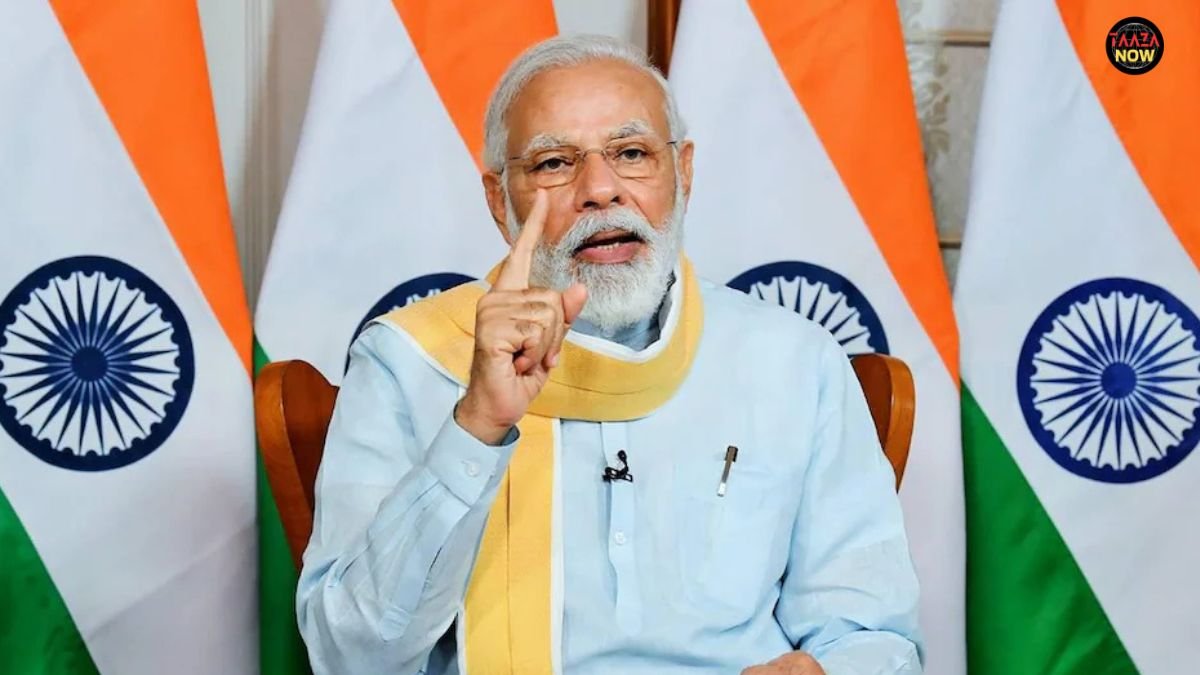India is preparing for another important address from PM Modi, scheduled for 5 PM today. The Prime Minister’s office has officially confirmed the timing but has not disclosed the topics that PM Modi will cover. This has triggered widespread speculation across the country, with citizens, market experts, and political analysts eager to know what the Prime Minister intends to announce.
Timing and Its Significance
The timing of this address is particularly noteworthy. It comes just a day before the implementation of the much-anticipated GST 2.0 reforms, which are expected to bring significant changes in taxation across a wide range of products. Observers suggest that PM Modi may use this opportunity to explain the impact of these reforms on households, traders, and businesses.

In addition, international developments are also on people’s minds. The recent crackdown on H1B visa holders by the United States has raised concerns among Indian IT professionals working abroad. Many speculate that PM Modi might address these challenges, offering reassurance or possible steps that the government could take to support the Indian workforce affected by these changes.
Historical Context: PM Modi’s Addresses
Since assuming office in 2014, PM Modi has used national addresses to announce major government decisions. These speeches have often shaped the nation’s understanding of critical policy shifts:
- On November 8, 2016, PM Modi announced the demonetisation of ₹500 and ₹1,000 notes, a move that reshaped India’s financial landscape.
- On March 12, 2019, the Prime Minister addressed the nation following the Balakot airstrikes, a response to the Pulwama terror attack.
- During the early stages of the COVID-19 pandemic, PM Modi informed citizens about the nationwide lockdown on March 24, 2020, followed by an extension on April 14, 2020, and later easing measures in May.
- More recently, on May 12, 2025, PM Modi briefed the nation about Operation Sindoor, India’s counterstrike following the terror attack in Pahalgam.
Each of these addresses demonstrates PM Modi’s tendency to communicate directly with citizens during critical moments, combining clarity, reassurance, and policy guidance.
GST 2.0 Reforms and Consumer Benefits

Today’s address coincides with the rollout of GST 2.0 reforms, expected to have an immediate impact on prices across a wide range of products. As PM Modi has emphasized economic relief and boosting consumption in past speeches, this timing is seen as strategic.
Also Read: Dadasaheb Phalke Award: Mohanlal’s Journey and Andhra Pradesh CM’s Congratulations
The reforms will reduce GST rates for essential goods such as ghee, ketchup, coffee, and paneer, as well as for electronic appliances and medicines. This is expected to lower costs for households, especially as the country enters the festive season. Citizens planning celebrations or shopping during Navratri are likely to feel the benefits immediately.
Festive Impact: Dhanteras and Car Buyers
One of the biggest beneficiaries of the new GST structure is expected to be buyers planning to purchase cars during Dhanteras. Tax rates for vehicles have been cut, prompting several automakers to announce price reductions. Analysts predict that these cuts could stimulate sales, offering a festive boost to the automobile sector.
Overall, the GST 2.0 reforms simplify the previous system of four tax slabs (5%, 12%, 18%, and 28%) into two primary slabs: 5% and 18%. Most everyday goods will fall under these new rates, while luxury items will attract a higher rate of 40%. By addressing these changes, PM Modi is likely to provide clarity to both consumers and businesses.
Anticipated Themes in PM Modi’s Speech
While speculation is rife, several key themes are expected in PM Modi’s address:
- Economic Relief Measures: Highlighting GST 2.0 reforms and explaining how they will benefit households and traders.
- International Issues: Addressing concerns related to Indian professionals abroad, including the H1B visa situation.
- Public Reassurance: Guiding national priorities and government initiatives ahead of the festive season.
- Encouraging Consumption: Offering citizens and businesses the confidence to engage in festive shopping, which could stimulate the economy.
Given PM Modi’s history, it is likely that the address will mix policy clarity with motivational and reassuring messaging.
Citizens and Market Reactions
Even before the speech, reactions from citizens and business communities indicate high anticipation. Traders are particularly interested in the implications of GST 2.0 for pricing and sales, while households are curious about how essential items will become more affordable.
Tech professionals, especially those concerned about H1B visa reforms in the United States, are also watching closely. Many hope PM Modi will outline steps the government could take to support Indian talent abroad, offering both reassurance and potential policy interventions.
Taazanow.com- Click Here

